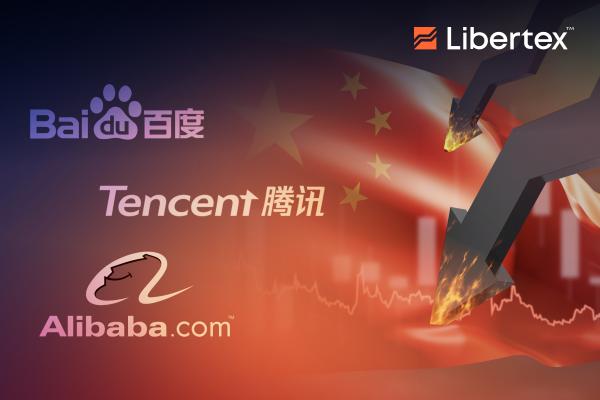With all the excitement surrounding the US presidential election and the much-awaited monetary policy pivot from the Fed, it’s easy to forget about the world’s second biggest economy, China. However, while all of this has been going on, the Asian powerhouse has been gradually seeking to fix its own post-pandemic economic problems. While inflation has remained relatively stable on account of the country’s command-economy model, China has struggled to return to its 2019 level of above-6% GDP growth. According to the latest numbers, the Chinese economy grew 4.7% in Q2 2024, a decent amount short of the 5.1% expansion forecast by Reuters and lower than the 5.3% growth seen in Q1. Retail sales for June also came in lower than expected, growing 2% year on year against projections of 3.3%. As a result, Hong Kong’s Hang Seng declined 1.73%.
However, it’s far from all doom and gloom. China’s big tech stocks are still exceptionally well-priced and the fundamentals for a recovery remain in place. What’s more, the real bugbear of the Chinese economy – the tanking property market – is showing signs of revival in both first- and second-tier cities. If the GDP numbers can be improved by year’s end, the outlook would be extremely positive. So, what does this mean for equities investors and what will be the main factors moving Chinese assets in the rest of 2024?
Value talks
Even taking a step back from the key economic indicators and wider stock market context in China, one thing that would surely catch any equities investor’s eye is the extreme value available in Chinese blue chip stocks right now. E-commerce and cloud computing giant Alibaba, for instance, is currently (18/07) available at a virtually irresistible price of $77.04 – an eight-year low, which represents a P/E ratio of 17.8. Not to mention that it offers an extremely generous 2.6% dividend yield to boot. WeChat owner Tencent’s current price of HK$ 370.40 is only a five-year low by comparison, but its P/E of 25 and 0.92% dividend yield are also nothing to be sniffed at in the context of growth stocks. But it’s Baidu that offers the best value of all. At $91.09, the ADR is at its lowest since 2013 and boasts a P/E ratio of just 12.19. And while it’s always wise to be cautious with value assets, we’re talking about some of the biggest and most successful tech companies in the world’s second-biggest economy. Now the headwinds of tighter regulation and antitrust legislation from the CCP are beginning to subside and these Chinese powerhouses begin to cement their position in developing world markets in both South East Asia and Africa, we could well be in for a boom cycle soon. Indeed, the FTSE China A50 Index currently stands at 12,302.80 – down 40% from its 2021 ATH. This is significantly more than the average -33.38% crash drawdown and more than double the average 1.4 year crash duration, which means we’re overdue for a bull cycle.
It’s the macroeconomy, stupid
Aside from the market conditions mentioned above, there are wider-reaching macroeconomic factors at play in the Chinese stock market. Anyone following China will surely remember the property market crisis of 2021 sparked by the collapse of Evergrande Bank. It was dubbed “China’s 2008” and the result was devastating for both ordinary investors and the country’s capital markets. People were understandably scared of making any kind of investment following such unexpected losses in a traditionally “fool-proof” asset class, and so high-risk instruments like corporate stocks were decidedly off the table for many. However, the latest data from the National Bureau of Statistics suggest a nascent recovery in first- and second-tier cities as sales transactions rise 3.6% from April. Meanwhile, figures from the Global Times reveal that nearly 60 percent of the top 100 developers saw their home sales values increase month-on-month in June. It’s no coincidence that the last ATH on the A50 Index was in 2021, and it’s reasonable that once housing prices recover, we will likely see an influx of newly freed capital into riskier assets like equities. And despite the recent GDP miss, growth is still expected to improve by between 0.1 and 0.3 percentage points this year, with a median GDP growth forecast that is now up to 4.9%. If these expectations are met, it will only encourage more foreign investment, which will be supported by the good value available in Chinese stocks at the moment. Finally, CCP policy is also likely to drive domestic interest in local equities amid active government purchasing of Mainland stocks.
Trade global stocks and more CFDs with Libertex
Libertex offers CFDs on a wide range of underlying assets, classes ranging from commodities, metals and Forex, through to ETFs, options and, of course, stocks. The Libertex platform gives you the ability to open long or short positions in stock CFDs. In addition to major Western indices like the S&P 500, EURO STOXX 50 and Nasdaq, Libertex also offers two China-focused indices in the A50 and Hang Seng, as well as individual Chinese stocks like Tencent Holdings, Baidu and Alibaba. For more information or to create an account of your own, visit www.libertex.org/signup today


